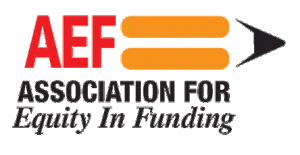In 2015, the Association for Equity in Funding (AEF) commissioned a second study, “Wisconsin School Funding and Outcome: Systemic Roadblock to Opportunity” through the Forward Institute to continue examining the systemic effects of school funding in Wisconsin. The first study, released in 2014, concluded that the current school funding mechanism in Wisconsin is insufficient to ensure that every child in every school has the resources necessary to receive a “sound, basic education” as defined in Vincent v. Voigt (Wisconsin State Supreme Court 2000). Further, the systemic effects over time are creating resource deficits due to increasing rates of higher needs students which are reaching crisis levels.
In order to effectively measure disparity in funding between school districts with vastly different student demographics, the first study developed a “Funding Disparity Rank” for each school district in Wisconsin. This ranking was generated by combining school funding and spending capacity, adjusts for inflation over the 10 years of the study; then uses a formula to “equalize” districts based on high needs student rates (as defined in Vincent v. Voigt). The “Funding Disparity Rank” provides for an apples-to-apples comparison of school district funding and spending capacity.
What remained unclear after the first study, is whether the school funding model and resulting disparity as measured by the “Funding Disparity Rank” has a direct impact on student performance and outcome?
This new study sought to answer that question.
Study Results
This study finally addresses the “adequacy” of funding question by testing whether funding disparity and other factors known to negatively affect outcome (i.e., student poverty and truancy) have a positive or negative association with key measures of student outcome.
Based on the study analyses, the following are key results that funding disparity does indeed have a negative effect on student outcome:
The “Funding Disparity Rank” (FDR) interacts with student poverty (measured by Free-Reduced Lunch (FRL)) rates to have a significant negative effect on school districts’ Department of Public Instruction (DPI) issued report card scores, particularly in districts with higher rates of FRL.
In the important benchmark of 8th Grade Math scores, funding disparity was found to have a significant negative effect. School districts with higher funding disparity, as measured by our previously discussed index, saw lower test scores. This is further evidence that the Wisconsin school funding system itself is creating segregation of opportunity.
The results of this study demonstrate that the system funding the education of our children in Wisconsin actually contributes to inequity of educational opportunity. The quality of educational opportunity in Wisconsin now largely depends on where you live, and the relative affluence of your family and community. Further, the systemic problems indicated by this study require immediate solutions to address systemic issues of student poverty, truancy, and increasing inequity in school funding.

